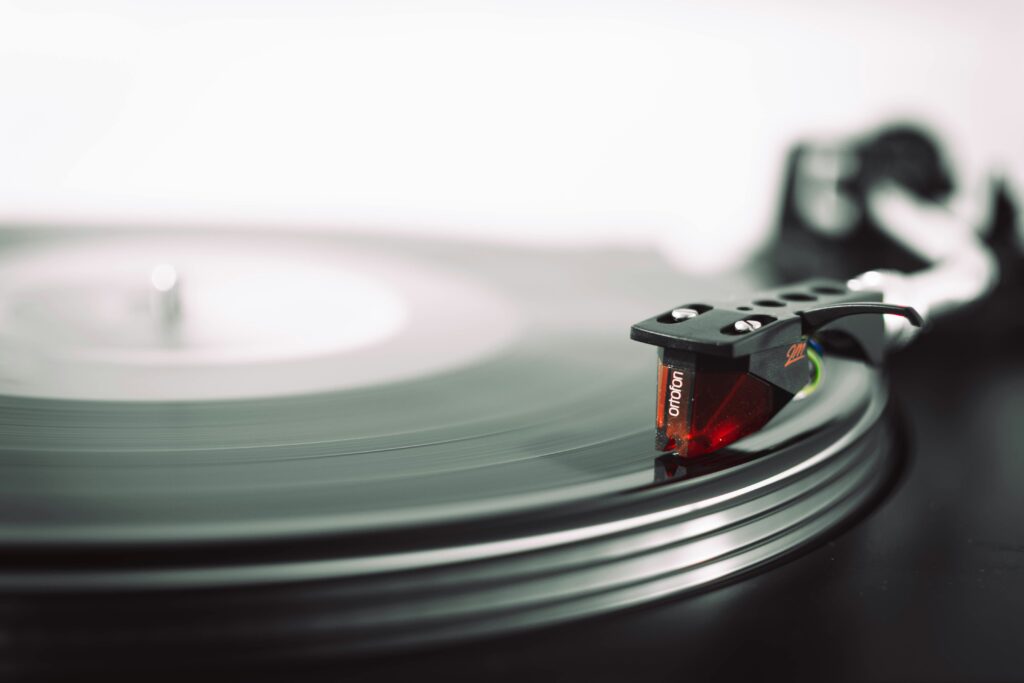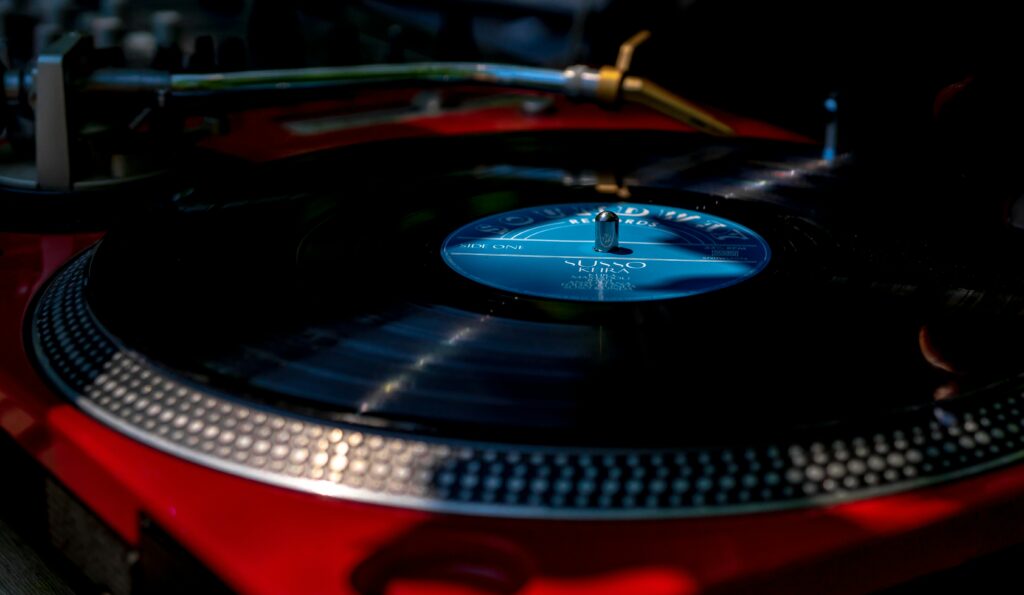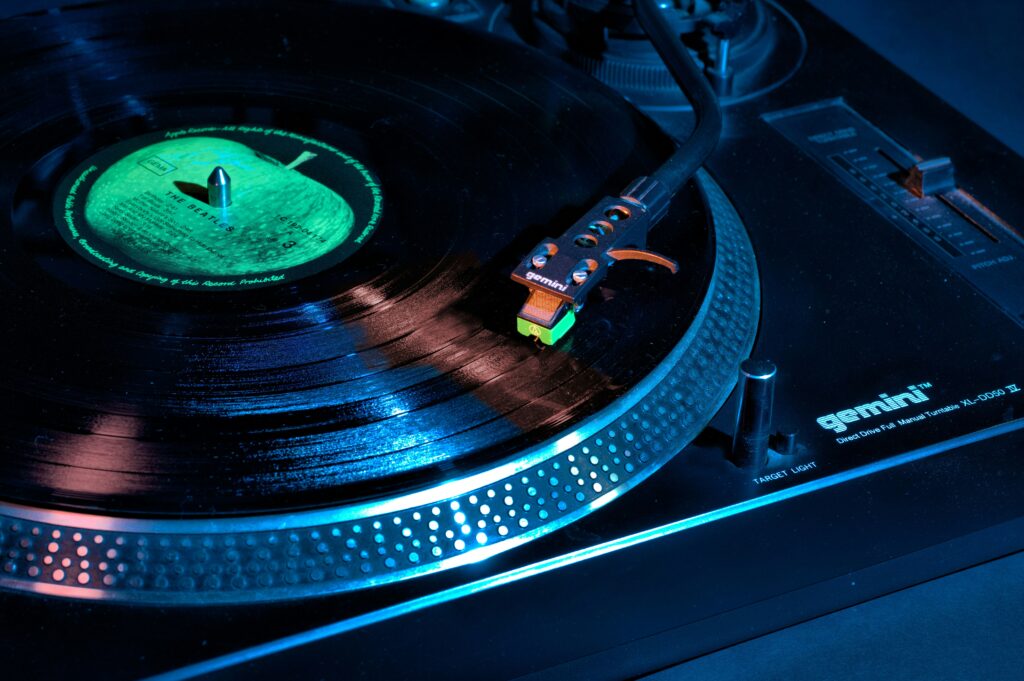Navigating the world of turntables may feel complex and confusing, especially so when it boils down to choosing between an automatic and manual turntable. In the bustling market for record players, multiple important factors should guide your purchase decision. Be it understanding the technical difference between belt-drive and direct-drive turntables, assessing the sound quality, or evaluating built-in features for a customizable audio setup – every aspect is crucial. Furthermore, considerations revolving around budget, brand reliability and the design aesthetics should also hold stead while you embark on your quest of finding the perfect record player. Of course, comfort is key too, so it’s advisable to understand the ease of maintenance and setup. Last but not least, remember to ensure your new turntable’s compatibility with different vinyl sizes and its upgradability in the future. Equipped with all this valuable knowledge, you’re well-prepared to make the right choice, leading you to an enriching vinyl listening experience that ticks all the right boxes. With a gentle focus on automatic and manual turntables, let’s decipher and understand their unique features, benefits and potential drawbacks.

Understanding Turntables: Types and Mechanisms
When it comes to the world of turntables, there is a lot to take in. The first feature you might want to understand is the distinction between belt-drive and direct-drive turntables.
The distinction between belt-drive and direct-drive turntables
In belt-drive turntables, the motor is separate from the platter and is connected via a belt, which reduces vibrations and results in cleaner sound. On the other hand, direct-drive turntables have the motor directly beneath the platter and are known for their stronger torque and consistent speed. Though they might transfer more vibrations, they’re often preferred by DJs because they spin up to speed immediately.
Defining automatic and manual turntables
Now that we’ve covered the drive aspect, it’s also important to understand the difference between automatic and manual turntables. With automatic tables, the tonearm places itself on the record and returns to its rest when finished. It’s a hands-off experience and reduces the risk of scratching your records. Manual turntables require you to manually place the tonearm on the record and return it at the end. This usually gives you more control and can lead to better audio quality.
Analysing Sound Quality of Turntables
Having a turntable means nothing if the sound quality is not satisfying. It’s important to know the key attributes contributing to good sound quality.
Key attributes contributing to good audio quality
The sound quality of a turntable depends on multiple factors. The platter and the drive contribute significantly. A high-quality platter that is heavy and balances well will result in a smoother spin. The materials used in a turntable also play a role. Those made from high-density wood or metal often produces better sounds.
The role of cartridge and stylus in sound reproduction
The cartridge and stylus of a turntable have a direct impact on its sound. A quality cartridge and stylus will accurately translate the record’s grooves into an electrical signal that can then be converted into sound.
The impact of adjustable tonearms on tracking
The tracking or alignment of your tonearm significantly influences sound quality. You might want to look for turntables with adjustable tonearms for better tracking. This allows you to correct the angle of the stylus as it traverses the record, providing more accurate sound reproduction.
Built-in Features of Turntables
Turntables nowadays come with a plethora of built-in features. Let’s delve into a few critical ones.
Turntables with built-in speakers versus using external speakers
turntables with built-in speakers offer convenience for casual listeners who prefer an all-in-one solution. However, using external speakers often allows for a better sound experience, providing more scope for customization and adaptability.
Extra features: Bluetooth connectivity, USB output, and integrated preamps
Modern turntables often include additional features like Bluetooth connectivity, allowing you to stream your vinyl records to wireless speakers or headphones. Some models also have USB output for connecting to a computer, and integrated preamps eliminate the need for a separate box, especially useful when space is limited.
Budget Considerations for Turntables
It’s important to find a turntable that fits your budget while fulfilling your needs.
Finding the right turntable within your budget
A variety of turntables with a wide range of prices are available on the market. Your budget will help narrow down the options, directing you towards a record player that you can afford without compromising too much on quality.
Correlation between price and quality: the risk of overly cheap models
While scouting for budget-friendly options, be wary of prices that seem too good to be true. Cheaper models often compromise on sound quality, durability, and additional features.

Importance of Brand Reputation in Turntables
The brand of a turntable can often give you a good idea of quality and durability.
Identifying reputable turntable brands
Certain brands have stood the test of time due to their commitment to quality. A few trusted brands in the turntable industry include Audio-Technica, Technics, and Rega.
Incorporating customer reviews into your decision-making process
Customer reviews are a valuable resource when researching different brands and turntable models. These reviews often provide reliable insights into the performance and longevity of certain turntables.
Maintenance and Upkeep of Turntables
Proper maintenance of your turntable is essential to prolong its life and maintain sound quality.
Understanding turntable maintenance and record care
Good turntable maintenance includes regular cleaning of the stylus and the turntable itself, as well as careful handling and storage of your vinyl records.
Evaluating the ease of setup and maintenance
When choosing a turntable, also consider how easy it is to set up and maintain. Some turntables require more technical knowledge and steps to get everything running smoothly than others.

Vinyl Compatibility with Turntables
Not all turntables are compatible with every vinyl record size or speed.
Checking for compatibility with various vinyl sizes
Turntables typically support 7-inch, 10-inch, and 12-inch records. Make sure the one you get can handle all the sizes in your collection.
Ensuring your turntable can play all desired vinyl speeds
The most common record speeds are 33.3, 45, and 78 RPM. Check that your turntable supports the playback speeds of your vinyl collection.
Design and Aesthetics of Turntables
Design and aesthetics are personal preferences, but they can play a role in your turntable purchase decision.
The role of design and aesthetics in purchasing decisions
The look of your turntable matters, especially if you’re planning to set it up in a visible spot. Some people prefer sleek, modern styles, while others prefer a more vintage-styled throwback look.
Balancing functionality and aesthetics: vintage-inspired versus modern designs
It’s crucial to strike a balance between functioning and aesthetics. A vintage-inspired turntable might catch your eye, but make sure it also performs to your expectations and includes any extra features you want.
Upgradability of Turntables
The upgradability of a turntable is another important consideration, especially if you aim to improve your setup over time.
Determining the potential for future upgrades
Some turntables allow you to replace certain components, such as the cartridge or stylus, to upgrade the sound quality. This allows for future customization and refinement of your listening experience.
Understanding the relevance of cartridge and stylus replacements
Cartridge and stylus replacements can dramatically improve your turntable’s sound quality. Therefore, it’s worth investigating the availability and compatibility of replacements when investing in a record player.
Research and Comparison of Turntables
Research can be painstaking and time-consuming, but it increases the chances of making a satisfying purchase.
The importance of research and comparison in selecting the perfect turntable
The perfect turntable is subjective, so understanding the details and differences between various models can help you prioritize which features are most important to you.
Experiencing various models in-person at local audio stores or events
Nothing beats experiencing a turntable firsthand. If possible, visit local audio stores or events to see different turntables in person, and maybe even get a listen. This will provide invaluable insight that could guide your final decision.
In conclusion, whether it’s the type of turntable, the sound quality, the features it has, your budget, or even the aesthetics of the machine, there are countless factors to consider when buying a turntable. The ideal turntable is one that suits your specific needs and preferences, so don’t rush the process and take the time to do your research before making a purchase.


